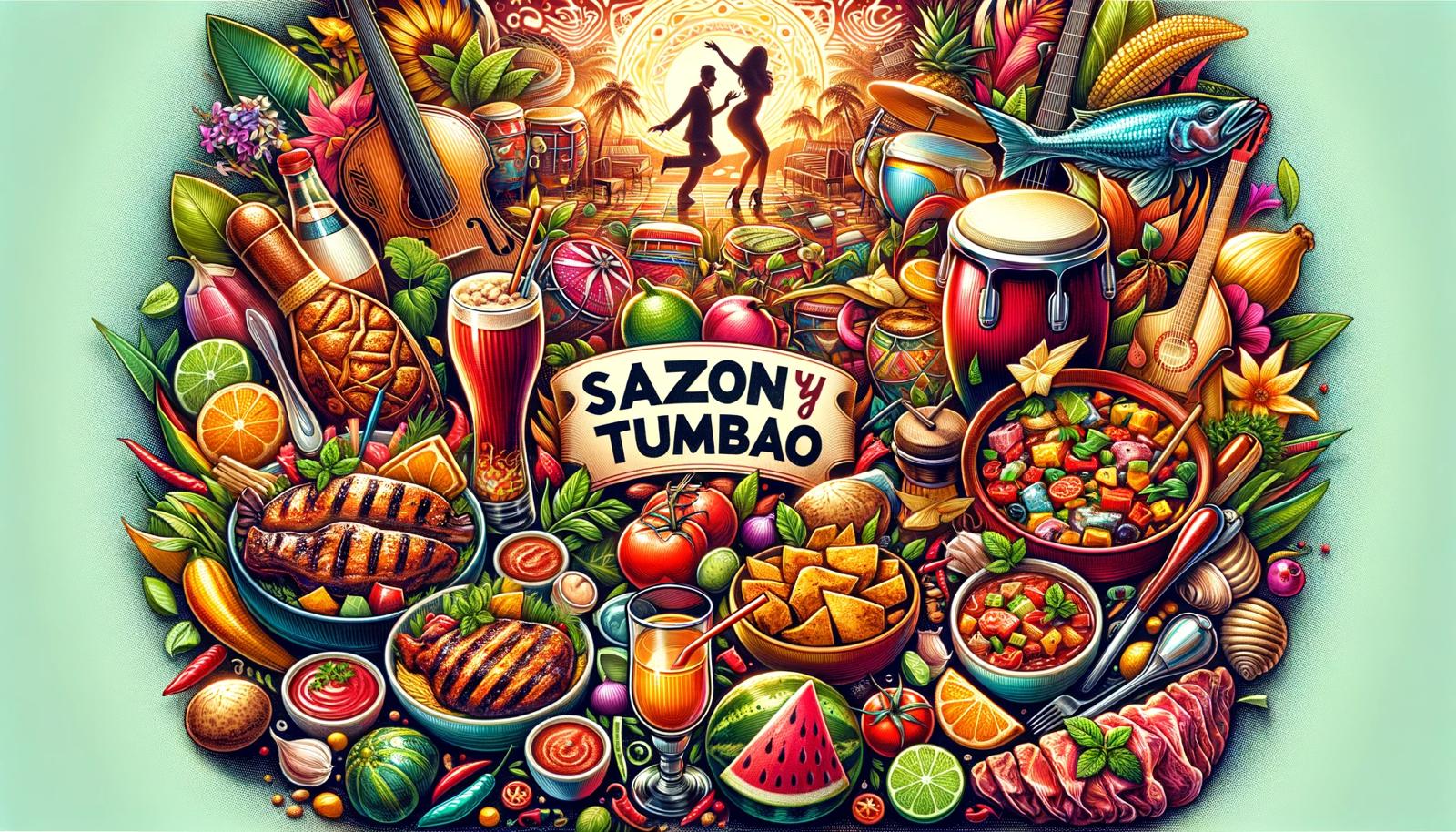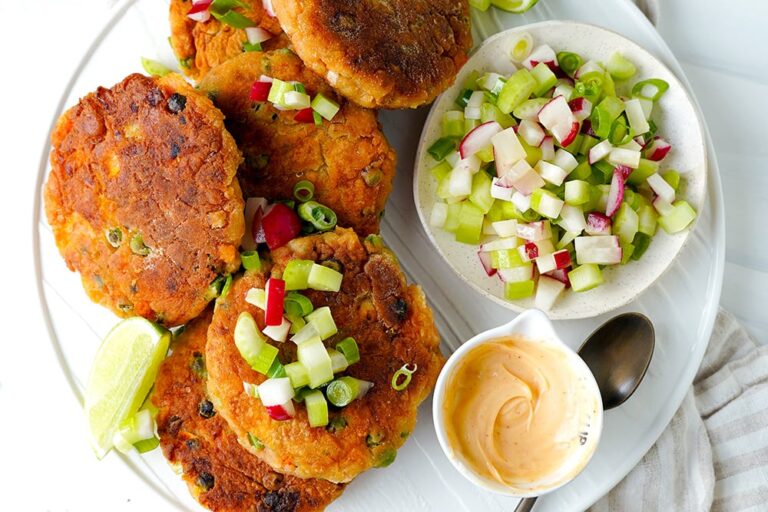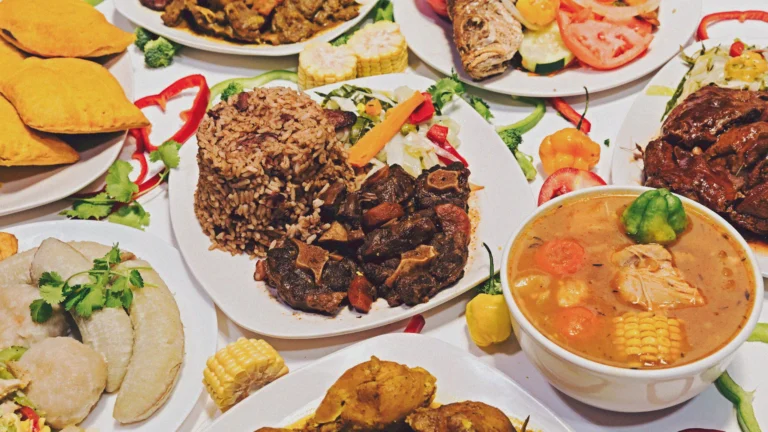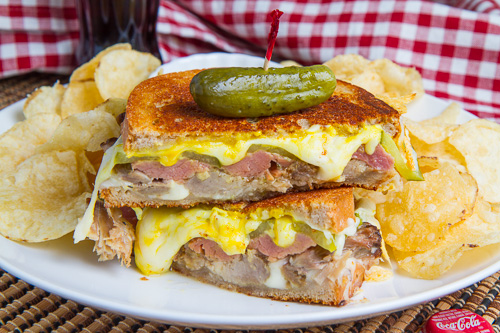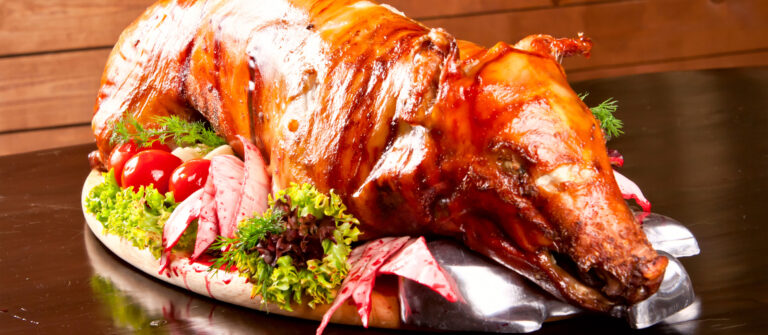Mofongo, a traditional Puerto Rican dish, is a testament to the island’s rich culinary heritage. This flavorful concoction, made primarily from fried green plantains, is mashed with garlic, salt, and oil in a wooden pilón, a mortar and pestle. The result is a hearty and comforting meal that has captured the hearts of food enthusiasts both on the island and beyond.
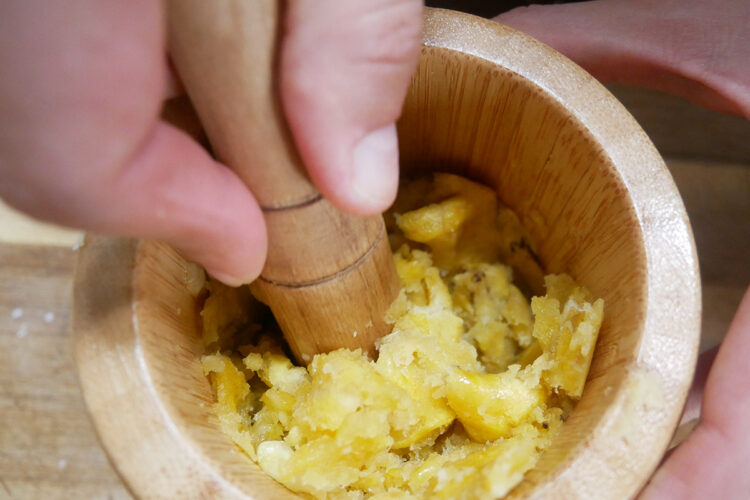
The dish’s simplicity belies its deep cultural roots, tracing to African influences and Spanish colonial history. Each bite of mofongo is a journey through time, a blend of textures and tastes passed down through generations. Whether served with a side of chicken broth or topped with succulent shrimp, mofongo remains a versatile staple, adaptable yet always true to its origins. As we peel back the layers of its preparation and significance, we uncover not just a recipe but a narrative of Puerto Rican resilience and joy. Let’s uncover the facts about Mofongo.
Origin and History Facts about mofongo
Mofongo’s journey begins in the warm, vibrant heart of Puerto Rico, a dish that encapsulates the island’s melting pot of cultures. Its story is a tapestry woven from threads of African, Taino, and Spanish influences, each adding depth and flavor to this culinary creation.
The African Connection
The roots of mofongo stretch back to Africa, where a similar dish known as fufu is a staple. Fufu, made from starchy vegetables, was brought to the Caribbean by Africans during the colonial era. This culinary tradition was adapted to the ingredients available in Puerto Rico, giving birth to what we now know as mofongo.
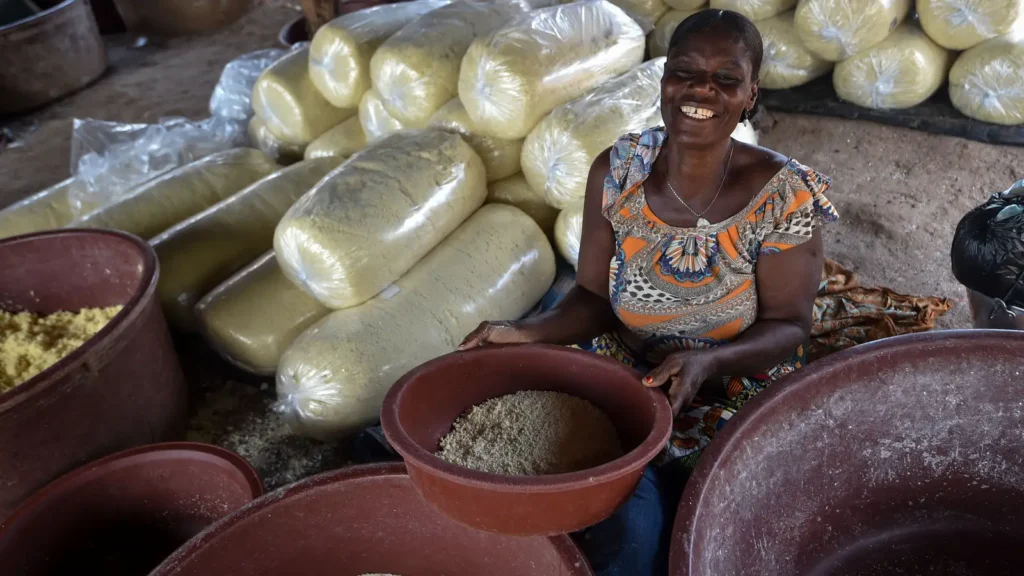
Taino Contributions
The indigenous Taino people of the Caribbean also played a role in mofongo’s history. They were adept at mashing root vegetables, a technique that became integral to making mofongo. The Taino influence is evident in the use of the pilón, a mortar, and pestle, which is essential for achieving mofongo’s unique texture.

Spanish Flavors
As Puerto Rico became a Spanish colony, European flavors began to mingle with the existing African and Taino culinary practices. The Spaniards introduced pork and garlic to the island, ingredients that are now fundamental to mofongo’s flavor profile. The dish evolved over time, incorporating these new elements to become a symbol of Puerto Rican cuisine.

Culinary Evolution
The earliest known written recipe for mofongo dates back to 1859 and is found in Puerto Rico’s first cookbook, “El Cocinero Puerto-Riqueño.” This version of mofongo included green plantains boiled with veal and hen mashed with garlic, oregano, and bacon or lard, forming a flavorful ball to be enjoyed with broth.
Mofongo Today
Today, mofongo is celebrated as Puerto Rico’s unofficial national dish. It’s a celebratory meal, often enjoyed with a cold beer or piña colada, and is a staple at Sunday brunches. At the same time, it’s a commonly homemade dish; not all restaurants offer it due to its labor-intensive preparation. When made, it’s done so with care, ensuring that each bite delivers the perfect balance of crunchy and soft textures.
Ingredients and Preparation
Mofongo is a dish that celebrates the rich tapestry of Puerto Rican culture, made with a few key ingredients that come together to create a comforting and flavorful experience.
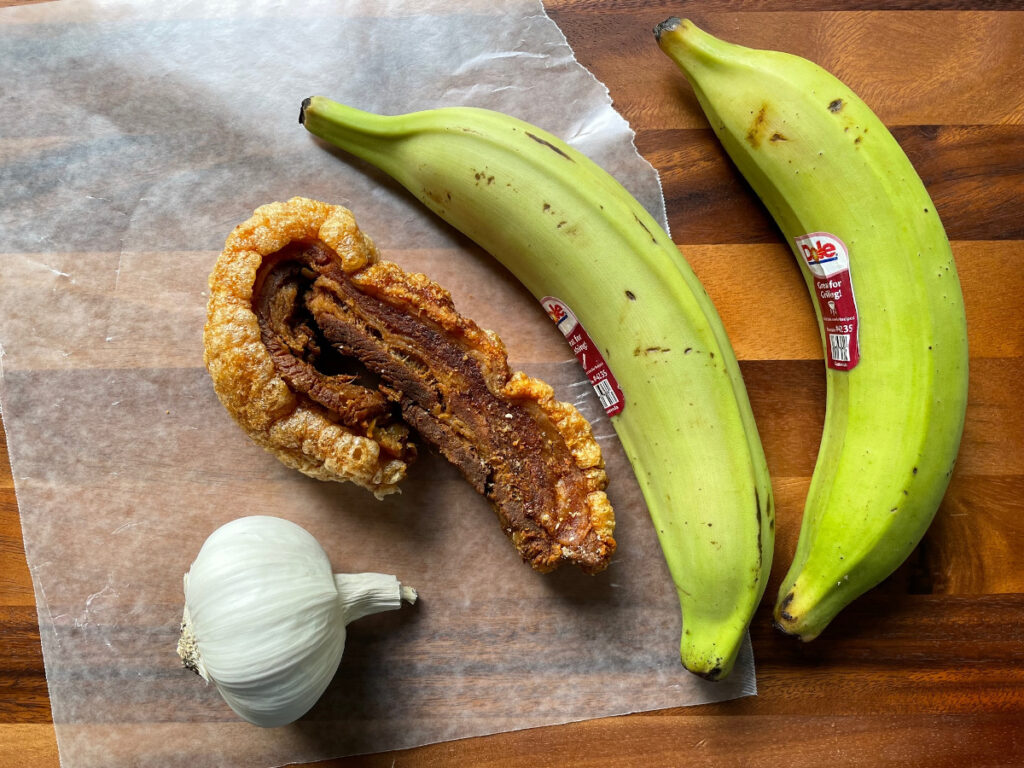
The Starchy Canvas: Green Plantains
The base of mofongo is the green plantain, a staple in Caribbean cuisine. These are peeled, cut into chunks, and fried until they are golden and tender. The plantains must be green to ensure the right texture and taste for the dish.
The Flavor Trio: Garlic, Pork, and Oil
Garlic is essential in mofongo, providing a robust flavor that permeates the dish. It is typically crushed into a paste and mixed with the plantains. Chicharrones, or pork cracklings, are added for their savory crunch, and olive oil binds all the ingredients together, adding richness and moisture.
The Art of Mashing
The ingredients are combined in a pilón, mortar, and pestle. The plantains, garlic, chicharrones, and a pinch of salt are mashed to a perfect consistency.
It’s a process that requires strength and finesse to ensure the mofongo is neither too smooth nor too lumpy.

Serving Mofongo
Once mashed, the mofongo is traditionally shaped into a mound or served in the pilón itself. It can be enjoyed as is or topped with a variety of proteins like shrimp, chicken, or beef. A side of chicken broth is often served to moisten the dish and enhance its flavors.
A Dish for All
Mofongo’s beauty lies in its simplicity and the joy it brings to those who make and eat it. It’s a dish that invites creativity and can be adapted to suit different tastes and preferences. Whether served as a side or a main course, mofongo is a celebration of Puerto Rican culinary tradition.
Cultural Significance
Mofongo is more than just a dish; it’s a vibrant emblem of Puerto Rican culture, embodying the island’s history and identity. This section delves into the cultural significance of mofongo, exploring its role in Puerto Rican society and how it has become a symbol of the island’s spirit.
A Melting Pot of Traditions
Mofongo stands as a testament to the fusion of African, Taino, and Spanish influences that have shaped Puerto Rican cuisine. The African roots of mofongo can be traced back to the dish fufu, which was adapted using local ingredients like plantains. The Taino contribution is evident in the use of the pilón, while Spanish flavors are introduced through garlic and pork. Together, these elements create a dish that is uniquely Puerto Rican.
More Than Food: A Symbol of Identity
For Puerto Ricans, mofongo is more than a culinary delight; it’s a part of their national identity. It tells a historical story dating back to the times of colonialism and the African influence on the island. Mofongo has evolved over time, with variations like yuca mofongo and trifongo showcasing the adaptability and creativity of Puerto Rican cuisine.
Celebratory and Communal
Mofongo is often associated with celebration and community. It’s a dish that brings people together, commonly served at family gatherings, festive occasions, and Sunday brunches. Its preparation is considered a labor of love, and its enjoyment is a communal affair. The dish is not just about eating; it’s about sharing, bonding, and reveling in the joys of a shared heritage.
The Heart of Puerto Rican Cuisine
In Puerto Rico, mofongo is not just another item on the menu; it’s a culinary staple that represents the heart and soul of the country. It’s a favorite among locals and a must-try for visitors, offering a taste of the island’s complex history and the resilience of its people. Mofongo exemplifies the essence of Puerto Rican culture—diverse backgrounds coming together to create something extraordinary.
Variations and Innovations of Mofongo
Mofongo, while deeply rooted in tradition, is a dish that has embraced variation and innovation throughout its history. This section explores the different takes on the classic mofongo, highlighting how creativity and local flavors have led to a delightful array of versions.
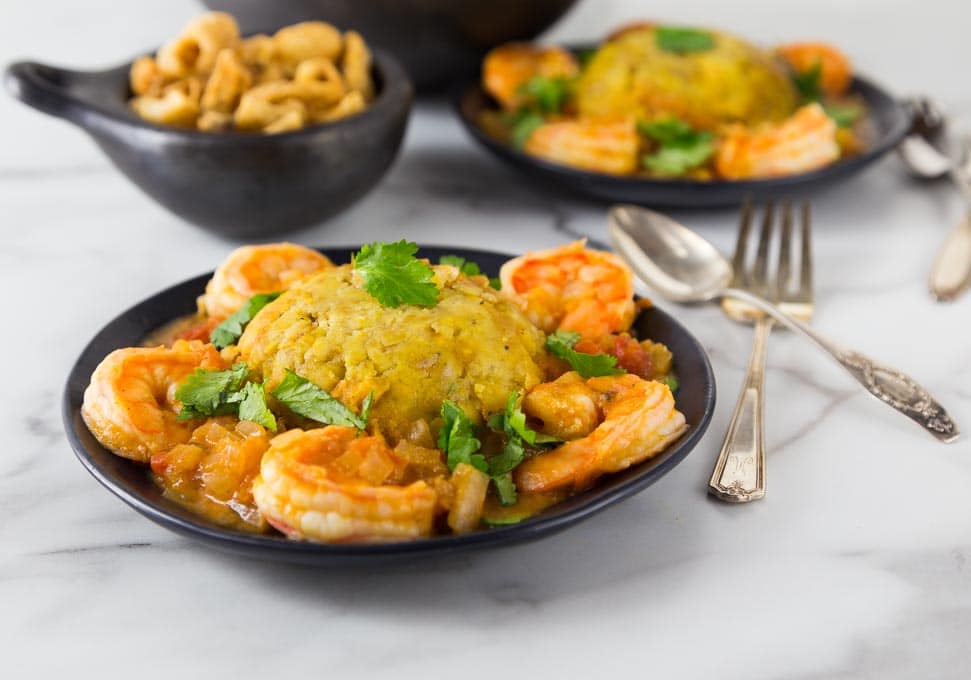
The Classic Base
At its core, mofongo is made with green plantains that are fried, mashed with garlic, and mixed with crunchy chicharrón. This traditional base has remained largely unchanged and is revered for its simplicity and depth of flavor.
Regional Twists
Across Puerto Rico, you’ll find regional variations that reflect the local palate and available ingredients. Some areas might add a touch of cilantro for freshness, while others might incorporate sweet plantains to add a subtle sweetness to the savory dish.
Mofongo Relleno: The Stuffed Delight
A popular innovation is mofongo relleno, where the plantain mixture is hollowed out and filled with a choice of meats, seafood, or vegetables. This version turns the side dish into a hearty main course, offering a complete meal within the mofongo itself.
Fusion Flavors
Chefs have experimented with mofongo by introducing ingredients from other cuisines. For instance, some might add a sofrito base, a nod to Spanish influences, or mix in other starches like yuca or breadfruit for a different texture and taste.
Bifongo and Trifongo: The Blended Varieties
Bifongo combines green plantains with other starch, such as sweet plantains or yuca. Trifongo takes it a step further, incorporating three different starchy components—green plantains, sweet plantains, and yuca—all mashed together. These variations showcase the versatility of mofongo and its ability to adapt to local ingredients and culinary creativity.
Whether you prefer the classic version or are eager to explore the innovative twists, mofongo continues to evolve while remaining deeply connected to its cultural heritage.
Final Analysis
This is all about the facts about Mofongo. In the heart of every mofongo dish lies a story, a tale of cultural fusion, resilience, and shared joy. As we wrap up our exploration of this beloved Puerto Rican treasure, let’s reflect on what makes mofongo truly special:
- Heritage and History: Mofongo’s roots stretch across continents and centuries. From African fufu to Taino techniques and Spanish flavors, it encapsulates Puerto Rico’s past and present.
- Simple Ingredients, Profound Flavor: Green plantains, garlic, and chicharrón—these humble components come together to create a symphony of taste. Mofongo proves that greatness can emerge from simplicity.
- Community and Celebration: Whether served at family gatherings, festivals, or Sunday brunches, mofongo brings people together. It’s more than a meal; it’s a shared experience, a celebration of culture.
- Innovation and Adaptability: Chefs play with mofongo, adding cilantro and sofrito or stuffing it with delightful surprises. Bifongo and trifongo showcase their versatility, proving that tradition can coexist with creativity.
So, next time you savor a forkful of mofongo, remember that you’re not just tasting food—you’re tasting history, resilience, and the spirit of Puerto Rico. Buen provecho!
